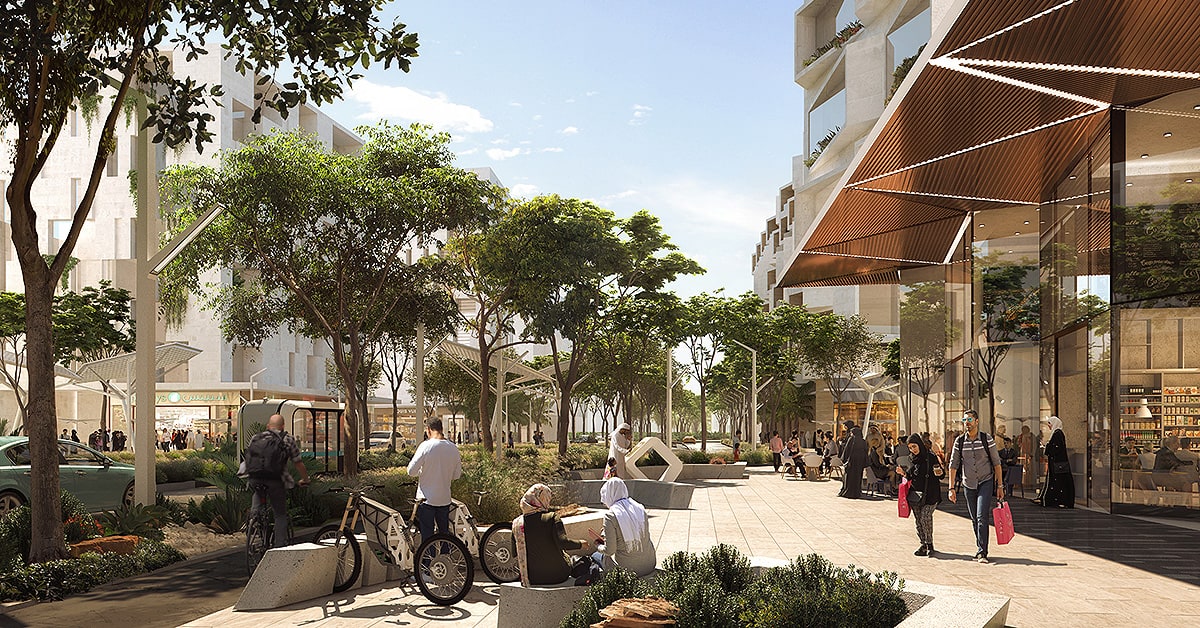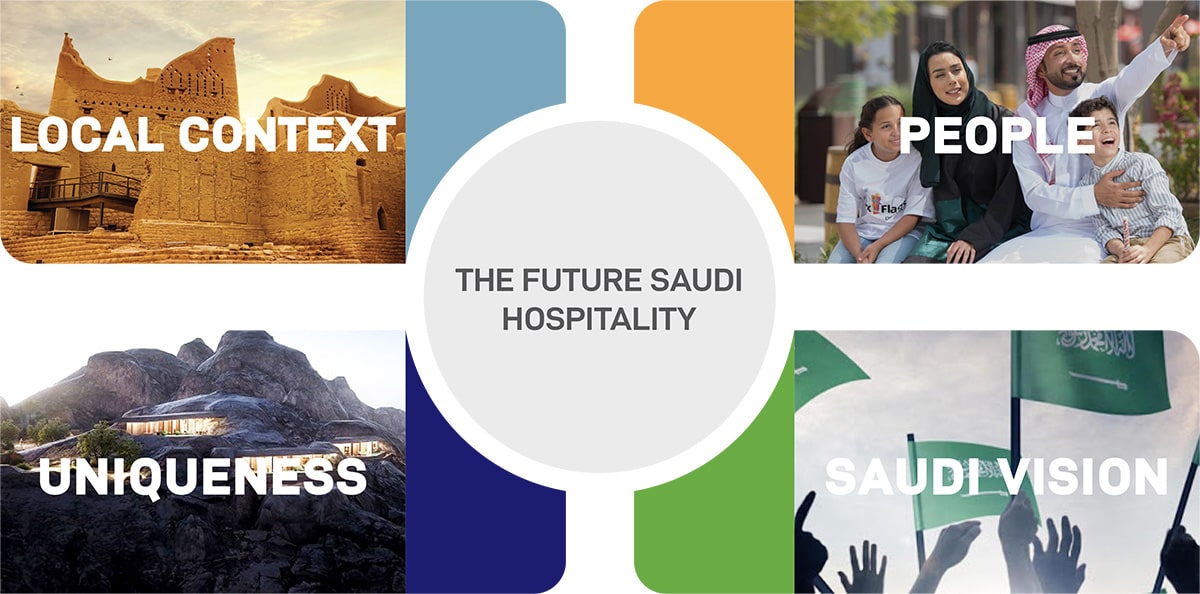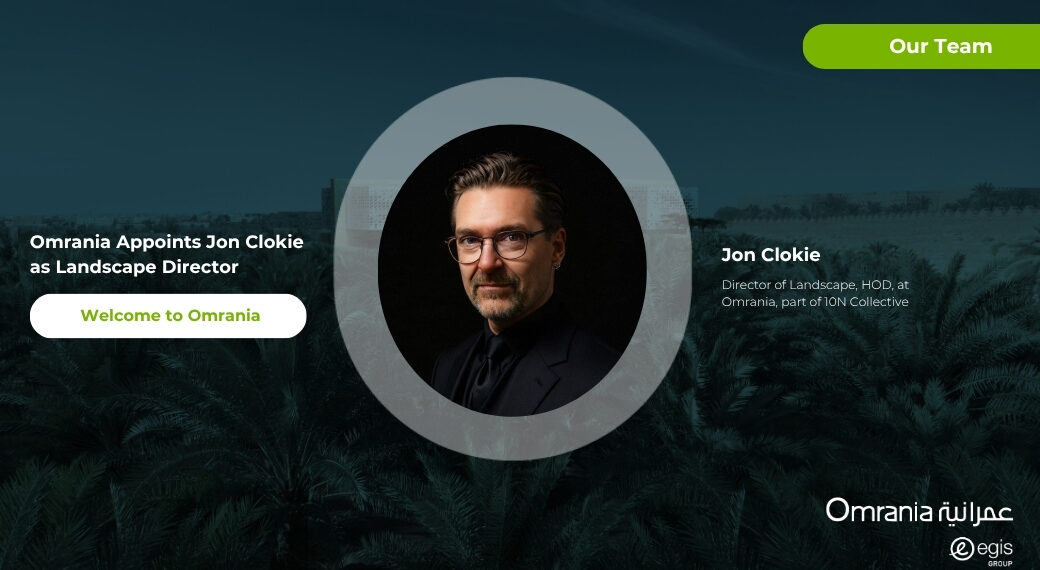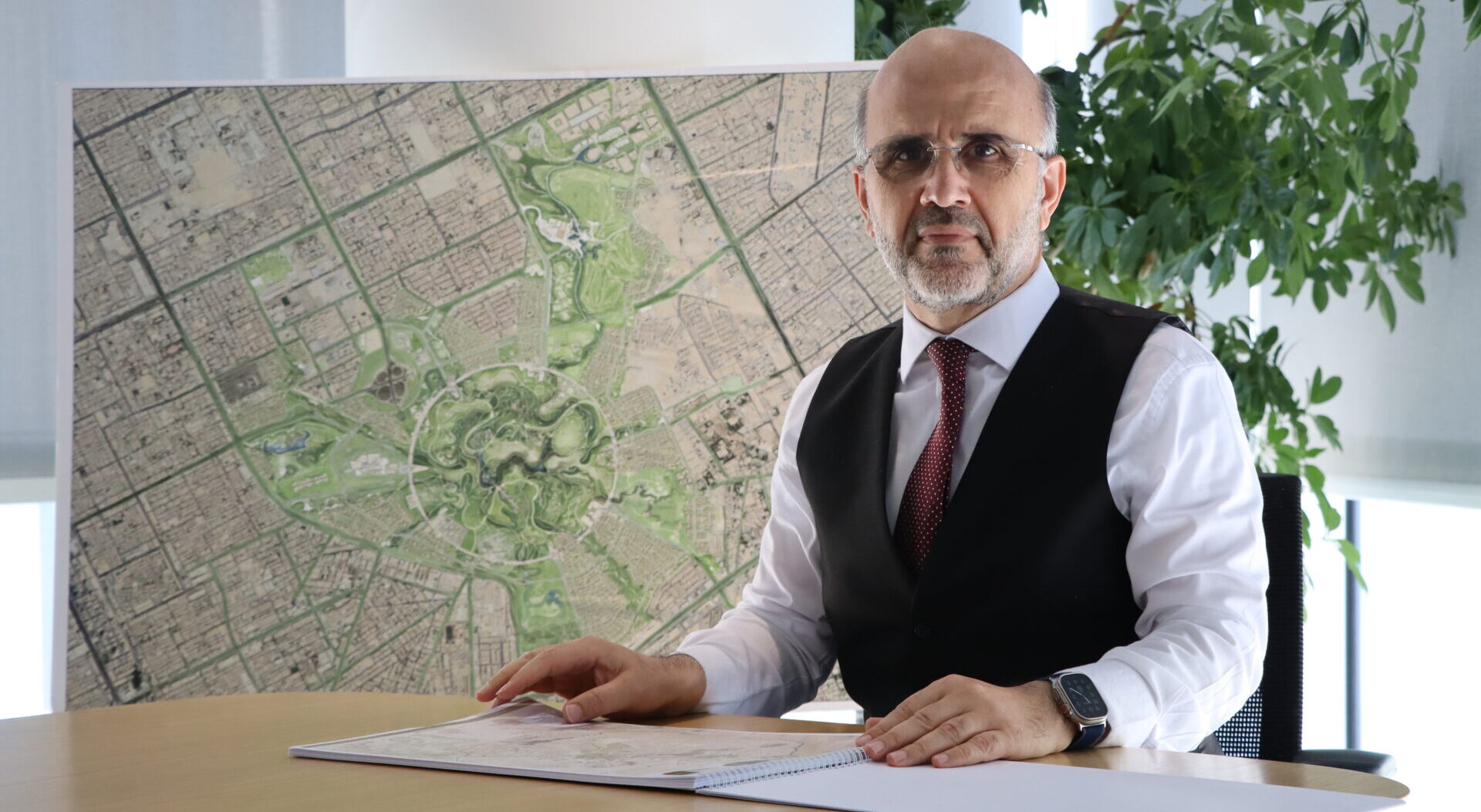 The Boulevard, King Salman Park, Riyadh, Saudi Arabia. 3D Render © Omrania
The Boulevard, King Salman Park, Riyadh, Saudi Arabia. 3D Render © Omrania .
In discussing the future of the Saudi hospitality industry, Omrania’s Chief Interior Designer, Oleg Cosneanu, emphasizes the importance of four elements: local context, people, uniqueness, and Saudi Vision.
When Oleg Cosneanu, Omrania’s Chief Interior Designer, was invited to participate in a prestigious panel discussion on the future of hospitality — as part of the 9th edition of the Real Estate Development (RED) Summit Middle East — he reflected on what he called “the revolution in the Saudi hospitality industry.”
Hospitality is important as both a driver of economic growth and an expression of cultural identity and aspirations. With numerous high-profile hospitality development projects underway across the Kingdom, from eco-resorts on the Red Sea to historic desert sites like Al Ula, Saudi Arabia stands on the brink of a new era of tourism, leisure, and hospitality development.
What will shape the future of the hospitality industry in KSA?

1. LOCAL CONTEXT
Engagement with local context is essential to designing and developing distinctive and welcoming places. This includes:
- Nature & Landscape. Highlighting beautiful and attractive locations that invite a sense of wonder and discovery. This theme is especially relevant to the Red Sea Coast, Al Ula, and Asir, among other locales. This also reflects the need for sustainable design and the growing market for eco-tourism.
- Heritage. The hospitality industry should highlight the treasures of cultural history, local arts & crafts, Saudi fashion, cuisine, and folk traditions.
- Attractions. Increasingly spectacular attractions like Formula 1 racing in Riyadh and Jeddah, the flourishing of the arts, festivals, sports events, and Saudi Seasons are catalysts for hospitality development, notably in urban hotspots.
2. PEOPLE
People, not just investment, will drive the Saudi hospitality industry. Both foreign and domestic tourism are expected to increase within the Kingdom. Saudi Arabia has a growing, youthful, upwardly mobile population that yearns to travel for leisure and business. Here are some of the qualities of tomorrow’s hospitality users:
- Modern. Today’s leisure and business travelers are at home in the modern world, and expect their hospitality accommodations to be state-of-the-art.
- Educated. The new generation is well-educated and interested in engaging with history, culture, art, nature, and identity.
- Ambitious. The guests of tomorrow are not content with standard experiences, but eager for new and amazing experiences.
- Well-traveled. Saudi hospitality developments must effectively compete with those in the UAE and other popular destinations.
3. SAUDI VISION
The Kingdom’s Vision2030 and other initiatives will help direct the goals and objectives of hospitality development in the coming years. Signature aspects of this vision include:
- Modernization. Develop a modern country that stays true to its cultural heritage and religious values.
- Sustainability. Transition from an oil-based economy to sustainable development.
- Ecology. Conserve and rehabilitate landscapes and ecosystems.
- Demography. Growth and youthfulness of the Saudi population.
- Investments. Strategic development of leisure, tourism, and hospitality sectors, including by entities such as the Public Investment Fund and the Events Investment Fund.
4. UNIQUENESS
It’s essential to develop the character and identity of each place. What makes Saudi Arabia unique and attractive to investors, operators and travelers? A number of ambitious megaprojects in the Kingdom have already gained attention across the region and internationally. Some of the most notable projects at various stages of development and construction include:
- King Salman Park. Futuristic 13-km2 green space in the heart of Riyadh, designed principally by Omrania.
- NEOM. A high-tech and walkable smart city based on renewable energy.
- The Red Sea Project. An exquisite sanctuary offering indulgent experiences, seamlessly customized to the unique needs of each visitor.
- AMAALA. Luxury tourism destination being developed along the northwestern Red Sea coastline.
- Qiddiyah. A massive, innovative tourism and entertainment hub in Riyadh.
- Al Ula. An ancient desert city set to become an international tourist destination.
- Diriyah Gate Development. A prominent Saudi heritage site developed as one of the Kingdom’s most prominent tourism destinations.
In conclusion, economic growth and environmental sustainability will begin to converge with cultural development through leisure and tourism. The future of the Saudi hospitality industry calls for pushing the limits of design and embracing local context, people, Saudi vision, and uniqueness.
Omrania, a well-known architectural firm, has built a distinguished reputation for its commitment to seamlessly integrating aesthetic and functional design, thereby establishing a standard of excellence for architecture firms in Riyadh, Saudi Arabia.







